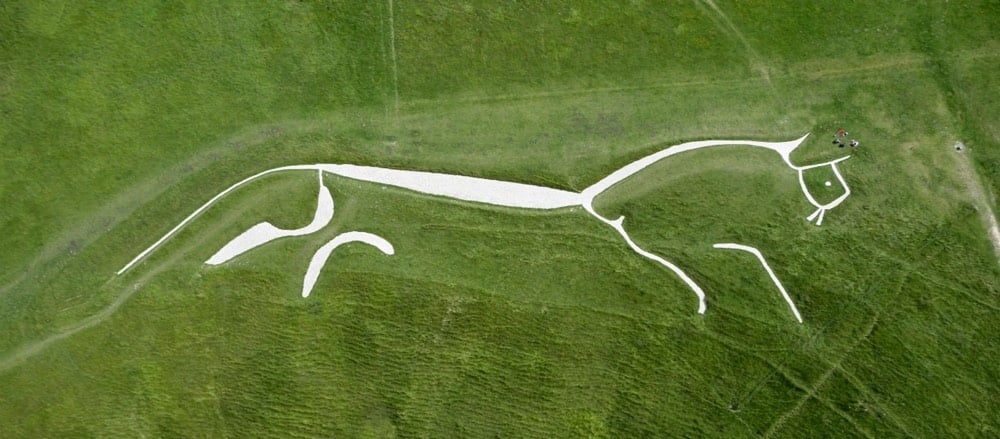The Care and Feeding of the Uffington White Horse Through More Than 100 Generations
The Uffington White Horse is a prehistoric monument that’s been around since the late Bronze Age, some 3000 years ago. Situated on a hill in the South of England and measuring 360 feet long, the horse is made of deep trenches filled with white chalk and is easily visible in the satellite view on Google Maps.

So cool. Here’s the truly amazing thing though: the horse requires regular maintenance or erosion and grass growing over the chalk will obscure the figure. Which means that the inhabitants of this area have continuously cleaned and maintained the horse — through changes in religion, king, climate, and empire — for 30 centuries.
It’s chalking day, a cleaning ritual that has happened here regularly for three millennia. Hammers, buckets of chalk and kneepads are handed out and everyone is allocated an area. The chalkers kneel and smash the chalk to a paste, whitening the stony pathways in the grass inch by inch. “It’s the world’s largest coloring between the lines,” says George Buce, one of the participants.
Chalking or “scouring” the horse was already an ancient custom when antiquarian Francis Wise wrote about it in 1736. “The ceremony of scouring the Horse, from time immemorial, has been solemnized by a numerous concourse of people from all the villages roundabout,” he wrote.
In the past, thousands of people would come for the scouring, holding a fair in the circle of a prehistoric fort nearby. These days it’s a quieter event. The only sounds are the wind, distant birdsong and the thumping of hammers on the chalk that can be felt through the feet.
The maintenance may have actually been the point of the horse:
From the start the horse would have required regular upkeep to stay visible. It might seem strange that the horse’s creators chose such an unstable form for their monument, but archaeologists believe this could have been intentional. A chalk hill figure requires a social group to maintain it, and it could be that today’s cleaning is an echo of an early ritual gathering that was part of the horse’s original function.
A group from the Long Now Foundation recently went to help out with the chalking of the horse and the trip report touches on the importance of upkeep to the infrastructure that our society depends on:
Though it requires considerably less resources to maintain, and is more symbolic than functional, the Uffington White Horse nonetheless offers a lesson in maintaining the infrastructure of cities today. “As humans, we are historically biased against maintenance,” Smith said in her Long Now lecture. “And yet that is exactly what infrastructure needs.”
When infrastructure becomes symbolic to a built environment, it is more likely to be maintained. Smith gave the example of San Francisco’s Golden Gate Bridge to illustrate this point. Much like the White Horse, the Golden Gate Bridge undergoes a willing and regular form of maintenance. “Somewhere between five to ten thousand gallons of paint a year, and thirty painters, are dedicated to keeping the Golden Gate Bridge golden,” Smith said.
(via @veganstraightedge)





Stay Connected